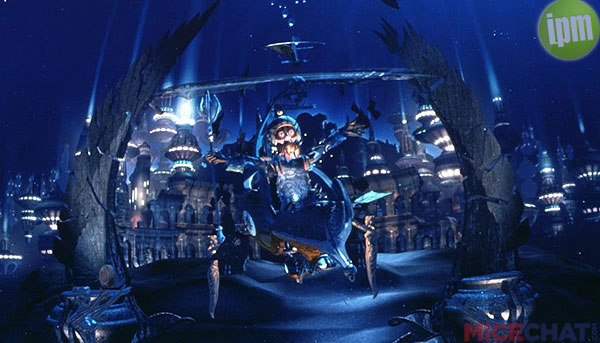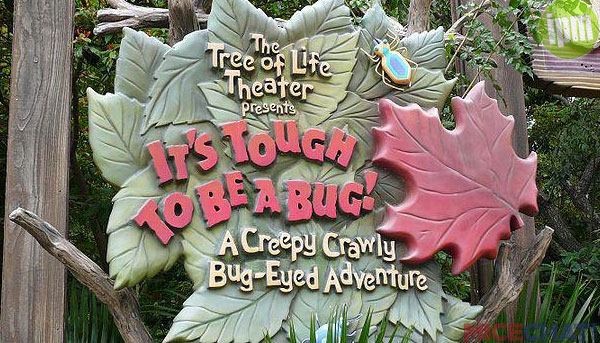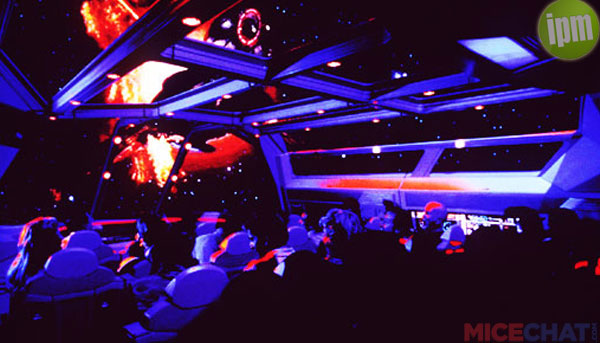With the movie awards season now behind us, one film secured its place in the pantheon of great visual effects films by winning the Annie for Outstanding Achievement in Character Animation in a Live Action Production, the Visual Effects Society (VES) Award for Outstanding Visual Effects in a Visual Effects-Driven Feature Motion Picture, and the BAFTA and Oscar for Visual Effects – Life of Pi.
You might have seen the film winning one of these awards or even watched live as VFX Supervisor Bill Westenhofer was ushered off the stage to the score from JAWS as he attempted to address the financial problems that the visual effects house behind the movie, Rhythm + Hues (R+H), was suffering. But were you aware of the four hundred visual effects artists that marched on the Dolby Theater that Oscar evening? They were doing this because a week before the Oscars, and only a day after winning the BAFTA, R+H filed Chapter 11 bankruptcy, laying off more than two hundred visual effects artists without pay.

As a journalist who covers the attractions, museum, and giant screen (IMAX) fields for a number of trade publications, I’m really only interested in such a bankruptcy when it affects one of these disciplines. And such is the case with Rhythm + Hues, whose attraction work dates back to 1982 and the opening of Epcot Center, where they provided the computer animation for the original Universe of Energy. They later created the Big Bang segment for Ellen’s Energy Adventure. Other notable work include The Funtastic World of Hanna-Barbera for Universal Studios Florida; Star Trek The Experience: Klingon Encounter and Race for Atlantis: The IMAX 3D Ride, both in Las Vegas, Le Visionarium (Timekeeper) for Euro Disneyland, and two attractions for the new Ferrari World in Abu Dhabi.

If you’re a Pixar fan, then you’re likely fan of its It’s Tough to Be a Bug at Animal Kingdom and California Adventure. But that 4D experience wasn’t made by Pixar – it was animated by R+H. I spoke with Charlotte Huggins, who in 2011 joined R+H to restart their Special Project Division. Charlotte’s credits as a producer include Disney’s Honey I Shrunk the Audience and the blockbuster Journey series of 3D films (including Journey to the Center of the Earth, Journey 2: The Mysterious Island, and the upcoming Journey 3). She told me that there are a number of projects they are either working or bidding on. These include a number of projects for a major new park in China. Although, due to the bidding processes and confidentiality, she was unable to disclose what projects, I’ll let you take a guess at what park.

Here’s a very simple explanation of what happened to cause the bankruptcy: Visual effects companies by their very nature as contractors are reliant on jobs to bring in money. If a job scheduled into the budget disappears – either because a studio dropped a film or pulled the project to send to a lower bidder, that will have an effect later on upon the company’s bottom line. Such a thing happened a year ago with R+H. When it did, management realized they had around eleven months to a year before things got really bad. They started courting an investor who would infuse the company with a new supply of cash. Everything was looking good and then September 11 happened. For on September 11, 2012, another giant visual effects company, Digital Domain, filed for bankruptcy. The investor got cold feet and pulled out. With only a few months to go before disaster hit, the company began operating on $17 million in loans from Fox and Universal, ensuring that it would complete projects for those two studios. Eventually, it had no choice but to declare bankruptcy.
Outside the US, subsidiaries of R+H continue to do well. The Canadian arm of the company, which is subsidized by the Canadian government, continues to sign onto new projects. And in Taiwan, a large new facility is going online. And here, a bit of confusion lies. Most of the industry trades when covering this Taiwan complex either incorrectly refer to it as an animation facility or don’t mention what it does at all. That has caused a bit of anguish among American vfx artists, a number of which were laid of by R+H without pay when the company filed for bankruptcy. According to people I’ve spoken with at R+H, the Taiwan facility, which is co-owned by the local telecom company, is primarily a rendering facility, and in fact is a larger version of a rendering facility built for Life of Pi. With higher frame rates, resolution, 3D, and image detail now coming to theaters thanks to digital cinema technology, the company needed the ability to process ever higher amounts of data.

So what is it that caused two major American visual effects firms to file for bankruptcy in a six month period? To find the answer, I went to two leading producers of vfx-heavy film-based attractions. Doug Yellin is Executive Producer at Matilda Entertainment. His credits include Borg Invasion 4D at Space Park Bremen in Germany and Star Trek: The Experience in Las Vegas, the IMAX film U23D, and Beyond All Boundaries, the signature film at the National WWII Museum in New Orleans. Here’s what he had to say:
Creating world-class digital VFX requires highly-skilled talent and ground-breaking innovative software . VFX companies need to have massive infrastructure to support this creative workforce and technical development. This requires money. A lot of money. Money that is spent before the jobs are paid for…leading to an all to familiar chicken and egg scenario…where large companies are living from paycheck to paycheck. Doing great work alone (and DD and R &H certainly have done and will continue to do that!) is sometimes not enough to navigate the financial whitewater and foreign competition.

My company is currently involved in a VFX intensive special venue project. We are working closely with VFX companies to ensure that our partnership will be mutually sustainable and deliver world-class guest experiences. The recent troubles at DD and R & H are certainly unsettling. However I am very hopeful that both of those companies will not just survive, but go on to continue doing visually stunning creatively groundbreaking VFX work.
Brent Young is President and Creative Director at Super 78. His credits include Madagascar: A Crate Adventure at Universal Studios Singapore, Shamu’s Believe at SeaWorld Adventure Parks, and Curse of Darkastle at Busch Gardens Williamsburg. Brent is also co-host of the Season Pass Podcast, which I highly recommend. Here are his thoughts on the issue at hand
VFX is a very tough business for several reasons:
- There is very little barrier to entry.
- It’s very difficult to maintain a clear competitive advantage.
- Supply is going through the roof where fewer big projects are being green lit.
- The profit margins are razor thin or non-existent.
While news of these bankruptcies is incredibly sad, and we are doing everything we can to support our fellow artists, these developments are not a complete shock to digital content producers. Unfortunately, these two bankruptcies follow a long string of facility shutterings in California. We are now seeing some high-profile shops suffer a fate similar to that which small- to mid-size studios have been experiencing for years.
The simple answer is that technology-driven industries like VFX have evolved and the costs to produce animation and visual effects in California are soaring. This is a very similar scenario what the 2D animation business experienced in the late 80’s and 90’s – when the quality of overseas facilities began to match the output of local shops, and studios, looking to lower production costs and minimize risk, sent that work abroad. The sad irony is that many of these outsource facilities were trained by bigger facilities to take their overflow and their lower-cost projects. Foreign government support in the form of subsidies, training programs, and equipment then compounds the problem, resulting in significant business changes and evolution.
Both studios contributed some amazing work to the special venue industry. And we owe our beginnings in special venue to R+H. But I don’t see this having much, if any impact on the creation of quality animation or media for special venues. It may, on the flip side, have a positive effect for the producers that are dedicated to servicing this industry. Owners and operators may look for the security in more specialized groups. Because the cost models and long schedules are very different for special venue than feature films, owners can’t afford to lose their facilities during a project. Especially if a facility is heavily invested in proprietary tools and closed systems. Owners and developers will need to understand if their project assets are completely portable if a facility can’t complete there work. The bottom line is that there will always be creative and experienced digital producers to take the dreams of the the owner and developer and make them a reality..
Next time, I’ll take a look at Disney’s role in the Digital Domain bankruptcy and report from the IMERSA Summit in Denver on how digital dome technology is changing the way you experience attractions, live theater, cinema, and nightlife.
And now, here’s a chance for you to help me write a new article. I will be in Anaheim April 5 and 6 representing Micechat at the Themed Entertainment Association’s annual summit and the Thea Awards. This year, Disney’s receiving four awards! Visit their blog at http://theaawards2013.blogspot.com/ and take a look at the projects that will be profiled on the 5th at Case Studies Day and receiving Thea Awards on the 6th, then email me your questions for the attraction designers to [email protected]. I’ll ask as many as I can, as long as they’re reasonable.


You must be logged in to post a comment.